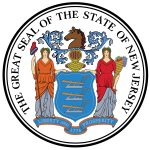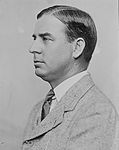
Thomas Woodrow Wilson was an American politician and academic who served as the 28th president of the United States from 1913 to 1921. A member of the Democratic Party, Wilson served as the president of Princeton University and as the governor of New Jersey before winning the 1912 presidential election. As president, Wilson changed the nation's economic policies and led the United States into World War I in 1917. He was the leading architect of the League of Nations, and his progressive stance on foreign policy came to be known as Wilsonianism.

The 1912 United States presidential election was the 32nd quadrennial presidential election, held on Tuesday, November 5, 1912. Democratic Governor Woodrow Wilson of New Jersey unseated incumbent Republican President William Howard Taft while defeating former President Theodore Roosevelt and Socialist Party nominee Eugene V. Debs.

The 1916 United States presidential election was the 33rd quadrennial presidential election, held on Tuesday, November 7, 1916. Incumbent Democratic President Woodrow Wilson narrowly defeated former associate justice of the Supreme Court Charles Evans Hughes, the Republican candidate.
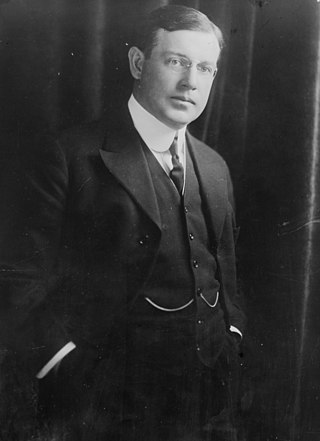
Walter Evans Edge was an American diplomat and Republican politician who served as the 36th governor of New Jersey, from 1917 to 1919 and again from 1944 to 1947, during both World War I and World War II. Edge also served as United States Senator representing New Jersey from 1919 to 1929 and as United States Ambassador to France from 1929 to 1933.

The history of what is now New Jersey begins at the end of the Younger Dryas, about 15,000 years ago. Native Americans moved into New town reversal of the Younger Dryas; before then an ice sheet hundreds of feet thick had made the area of northern New Jersey uninhabitable.

Joseph Maull Carey was an American lawyer, rancher, judge, and politician, who was active in Wyoming local, state, and federal politics.
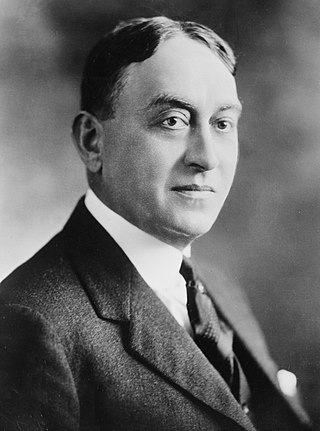
George Sebastian Silzer was an American attorney, jurist, and Democratic Party politician who served as the 38th Governor of New Jersey from 1923 to 1926.

James Fairman Fielder was an American Democratic politician and jurist who served as the 35th Governor of New Jersey,from 1914 to 1917. He had previously served as acting governor in 1913 but stepped down from office to avoid constitutional limits on serving successive terms.

Woodrow Wilson's tenure as the 28th president of the United States lasted from 4 March 1913 until 4 March 1921. He was largely incapacitated the last year and a half. He became president after winning the 1912 election. Wilson was a Democrat who previously served as governor of New Jersey. He gained a large majority in the electoral vote and a 42% plurality of the popular vote in a four-candidate field. Wilson was re-elected in 1916 by a narrow margin. Despite his New Jersey base, most Southern leaders worked with him as a fellow Southerner.

Vivian Murchison Lewis was an American jurist and politician. He was the Republican nominee for Governor of New Jersey in 1910 against Woodrow Wilson and lost the election.
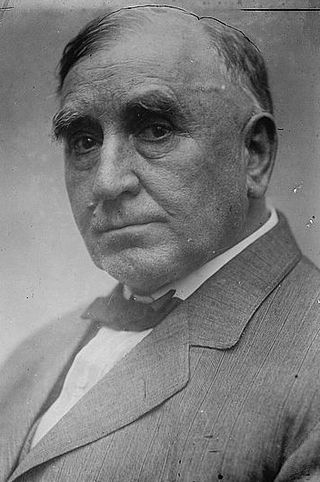
John Wesley Wescott was an American lawyer and jurist who served as Attorney General of New Jersey from 1914 to 1919. He had the distinction of making the nominating speech for Woodrow Wilson at the Democratic National Convention in both 1912 and 1916.

The 1912 United States presidential election in New Jersey took place on November 5, 1912. All contemporary 48 states were part of the 1912 United States presidential election. Voters chose 14 electors to the Electoral College, which selected the president and vice president.

The 1914 United States Senate election in New York was held on November 3. Incumbent Republican Senator Elihu Root chose not to seek re-election. James Wolcott Wadsworth Jr. was elected to a succeed Root, defeating Democrat James Watson Gerard.

The 1913 New Jersey gubernatorial election was held on November 4, 1913. Democratic acting Governor James Fairman Fielder, who resigned a week before the election so that he could succeed himself, defeated Republican former Governor Edward C. Stokes and Progressive former State Senator Everett Colby.

From March 7 to June 6, through a series of primaries and caucuses, voters of the Republican Party elected delegates to the 1916 Republican National Convention, held June 7 to June 10, 1916, in Chicago, Illinois to choose the party's nominee for President of the United States. The delegate election process was inconclusive, with a small plurality supporting Associate Justice of the Supreme Court Charles Evans Hughes. Hughes eventually secured the nomination on the third ballot.

Frank Snowden Katzenbach, Jr. was an American jurist and Democratic party politician from New Jersey. He was an Associate Justice of the New Jersey Supreme Court and was the Democratic nominee for Governor of New Jersey in 1907. He was the brother of New Jersey Attorney General Edward L. Katzenbach and uncle of Nicholas Katzenbach, the United States Attorney General.

The 1912 United States presidential election in Wisconsin was held on November 5, 1912 as part of the 1912 United States presidential election. State voters chose 13 electors to the Electoral College, who voted for president and vice president.

The 1932 United States presidential election in Wisconsin was held on November 8, 1932 as part of the 1932 United States presidential election. State voters chose 12 electors to the Electoral College, who voted for president and vice president.
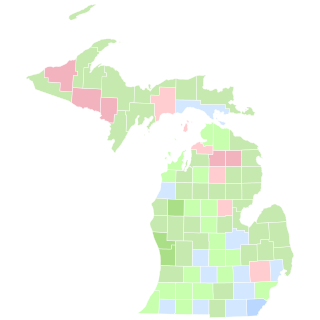
The 1912 United States presidential election in Michigan took place on November 5, 1912, as part of the 1912 United States presidential election. Voters chose 15 representatives, or electors, to the Electoral College, who voted for president and vice president.

Thomas Woodrow Wilson was an American politician and academic who served as the 28th president of the United States. The early life of Woodrow Wilson covers the time period from his birth in late 1856 through his entry into electoral politics in 1910. Wilson spent his early years in the American South, mainly in Augusta, Georgia, during the Civil War and Reconstruction. After earning a Ph.D. in political science from Johns Hopkins University, Wilson taught at various schools before becoming the president of Princeton University. Wilson later went onto become governor of New Jersey from 1911 to 1913, a major progressive reformer and then finally, President of the United States from 1913 to 1921.

